Wasp Identification & Control

About Wasps
Wasps are often mistaken for bees because of their similar body shape and color. Common species like yellowjackets and bald-faced hornets are known for stinging aggressively when defending their nests, especially in late summer and early fall.
While they play crucial roles in pollination and natural pest control, wasps become a concern when they nest too close to homes or buildings. In such cases, it’s best to call a pest control professional to safely handle large nests or infestations.
Appearance
Wasps have slender, segmented bodies with two sets of membranous wings and a narrow waist (petiole). Hornets, a subset of social wasps, are generally larger and can reach up to 2 inches in length. Other wasp species range in size from 0.005″ (fairy wasps) to 3″ (giant scoliid wasps).
Behavior
Wasps are categorized into two main groups: social and solitary wasps.
- Social wasps, including yellowjackets, hornets, and paper wasps, live in colonies consisting of thousands of individuals. These species sting aggressively when defending their nests, which can be found in trees, underground, or buildings.
- Solitary wasps, which makes up the majority of wasp species, live in individual nests and hunt alone. They are not aggressive towards humans and only sting to protect themselves.
Normally, wasps are found outdoors near trees and shrubs, but they occasionally enter homes in search of food or shelter. They are attracted to sugary foods, fruits, and meat, especially in late summer when natural food sources are scarce.
Risks
Social wasps often build their nests close to human dwellings, such as under eaves, in attics, or in ground cavities near gardens or patios. This makes it easy for someone to unknowingly stumble into their territory, leading to a higher risk of stings.
Unlike bees, which can only sting once, wasps have smooth stingers that allow them to sting repeatedly. Not only are their stings painful, in severe cases they may trigger allergic reactions, including life-threatening anaphylaxis.
Identification
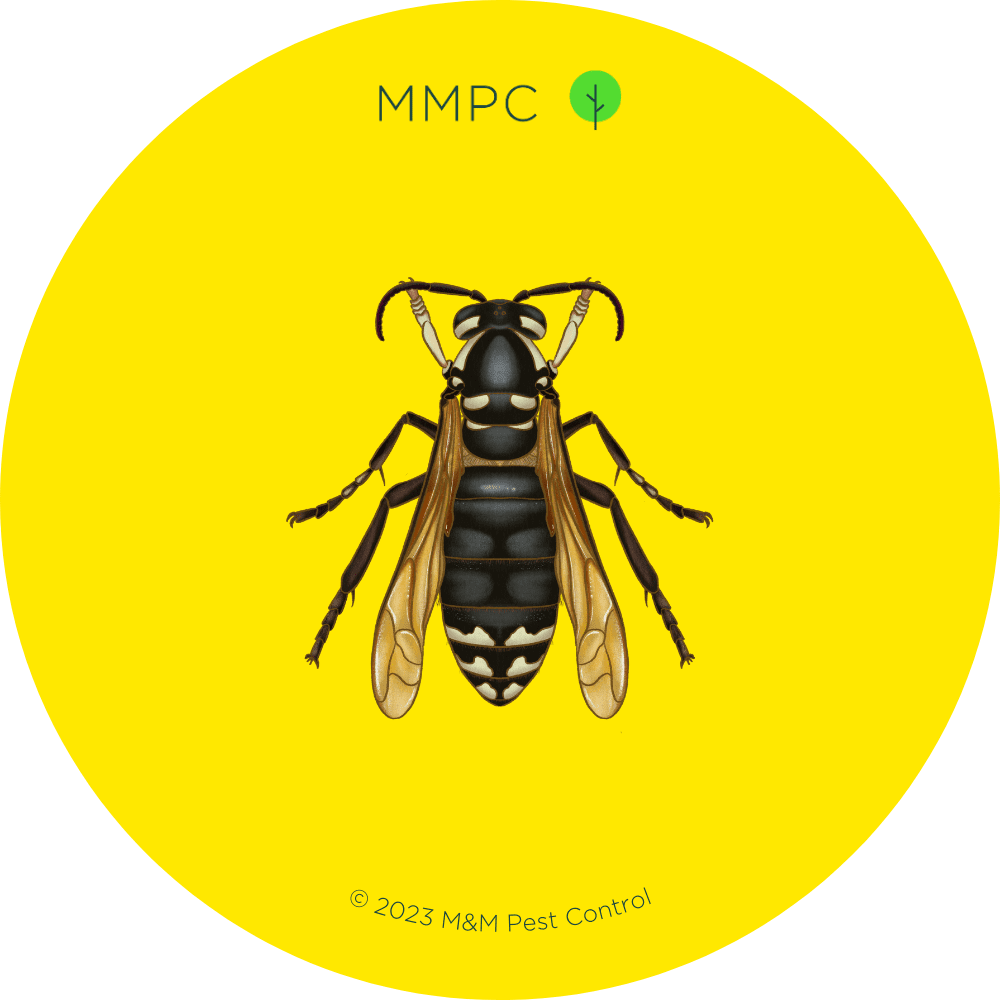
Bald-Faced Hornet
Bald-faced hornets (Dolichovespula maculata) are relatives of yellowjackets and not a true hornets. The “bald-faced” part of their name comes from the distinctive white markings on their heads.
They build large, gray, paper-like nests shaped like an upside-down teardrop, often hanging from high places like trees, eaves, or poles.
Bald-faced hornets are highly aggressive and will sting multiple times when their nests are disturbed. They can also spray venom at intruders’ eyes, causing temporary blindness.
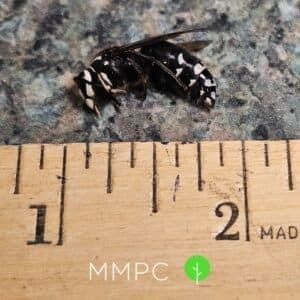
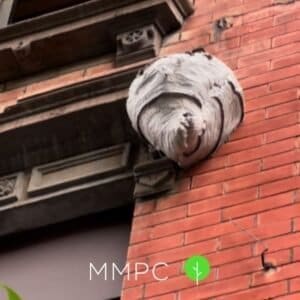
Size: 1/2″ – 5/8″ (12 – 14 mm)
Color: Black and white
Identifying Features:
- A smooth, stout body with a short waist and pointed lower abdomen covered in ivory-white markings.
- White markings on the face and mandibles
- 2 slanted white stripes on the thorax
- 3 white stripes on the last 3 abdominal segments
- Translucent, smoky-colored wings
- 6 black legs with white markings
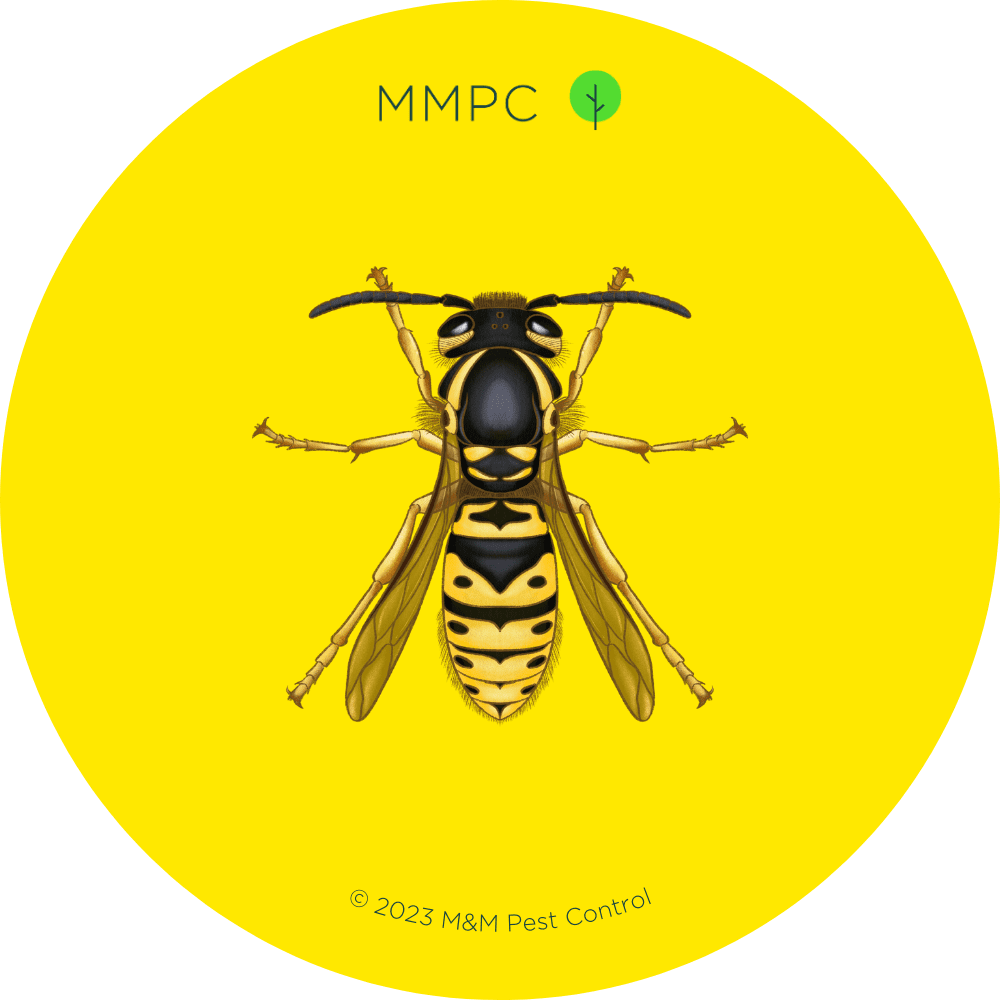
Eastern Yellow Jacket
Eastern yellow jackets (Vespula maculifrons) are primarily ground nesters, often building in abandoned rodent burrows. They can also build nests in sheltered areas such as attics or wall voids.
Yellowjackets are known for their aggressive nature and are responsible for half of all sting-related injuries in the US.
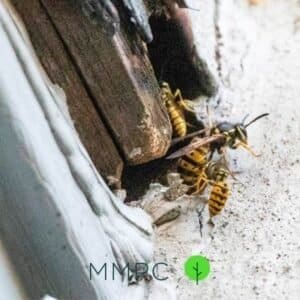


Size: 1/2″ – 5/8″ (13 – 16 mm)
Color: Black and yellow
Identifying Features:
- A smooth, compact body with a short waist and a pointed lower abdomen covered in yellow markings and stripes
- Black antennae
- Yellow mandibles
- Translucent wings with dark brown veins
- 6 yellow legs

European Paper Wasp
Paper wasps build nests from a papery material made of dead wood and plant fibers. Their nests have a distinctive inverted umbrella shape with open combs, usually found hanging under eaves or in tree branches.
Less aggressive than other wasps, paper wasps will typically warn intruders by flying toward them without stinging. However, they will sting to defend their nests.
The European paper wasp (Polistes dominula) is the most commonly encountered species.
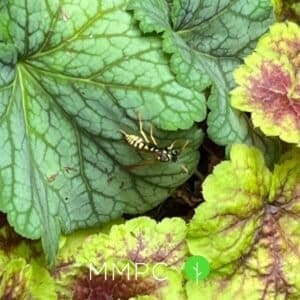
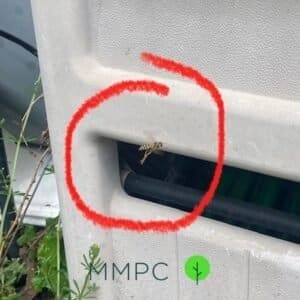

Size: 3/4″ – 7/8″ long (19 – 22 mm)
Color: Black and yellow
Identifying Features:
- A smooth, slender body with a narrow waist and a pointed lower abdomen covered in yellow markings
- Orange or yellow-tipped antennae
- Black mandibles
- Translucent wings with yellow-orange veins
- 6 yellow legs, with extra long hind legs that dangle in the air when flying
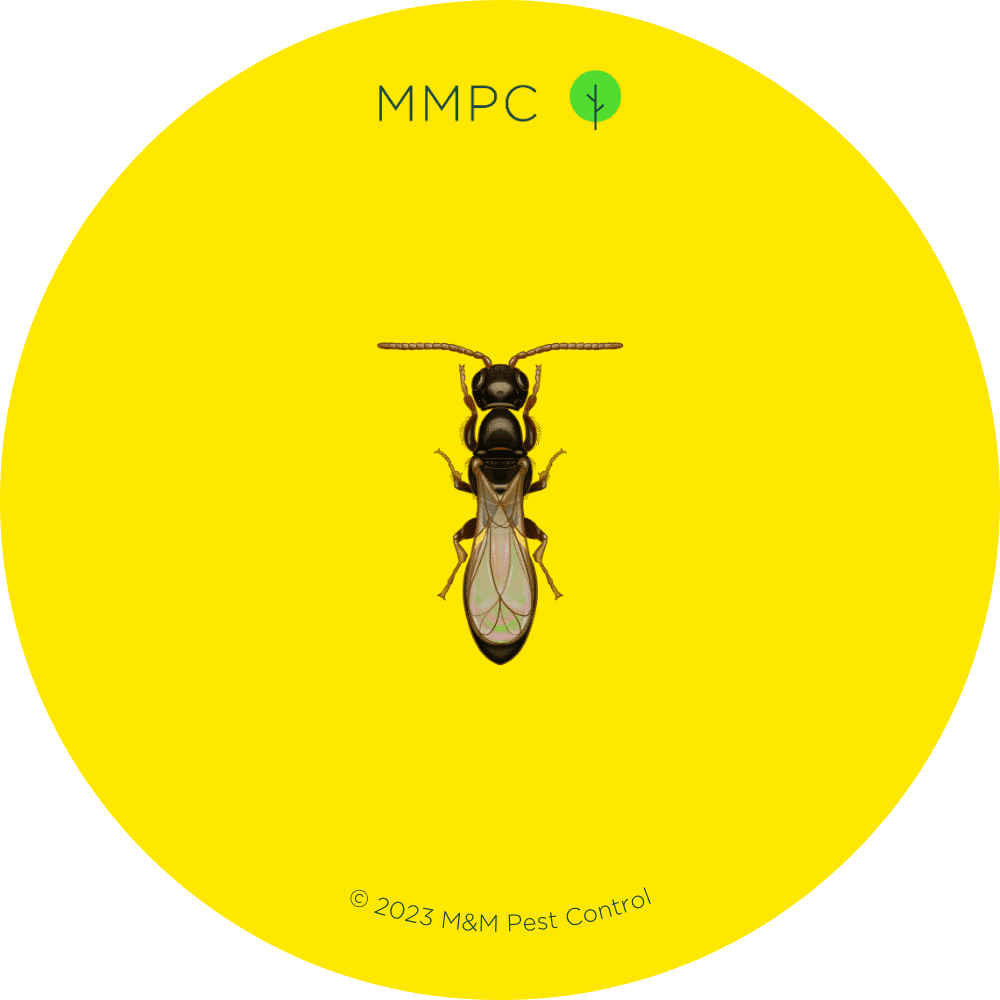
Parasitoid Wasps / Bethylid Wasps
Bethylid wasps (Bethylidae spp.) are parasitoid wasps that lay their eggs in beetle larvae. When found indoors, they are usually an indicator of an infestation of carpet beetles or pantry beetles.
Females are wingless and can sting when handled. Their stings may cause redness, swelling, and small welts.
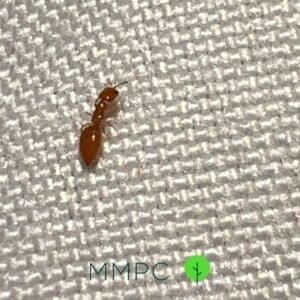

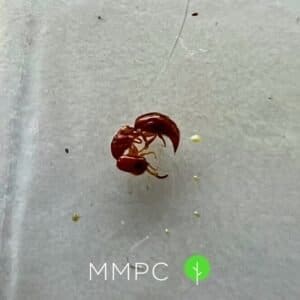
Size: 1/12″ – 1/5″ (2 – 5 mm)
Color: Dark-brown or black
Identifying Features:
- A flat, ant-like body with a narrow, elongated thorax and a long, tapered abdomen
- Long, thin antennae
- Females are wingless, while males have 2 pairs of transparent wings
- 6 legs
Control
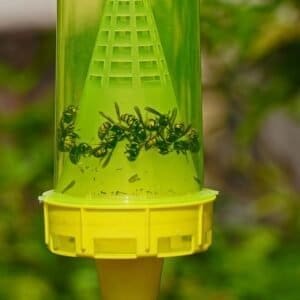
How to Get Rid of Wasps & Hornets
Getting rid of wasps and hornets requires a safe and careful approach. Avoid dangerous DIY methods like flooding nests with water or setting nests on fire, which will instead provoke the wasps and increase the likelihood of stings.
Removing Attractants
Wasps are attracted to sweet foods, sugary drinks, and other insects. Reducing these attractants around your property will help prevent infestations:
- Keep food and drinks sealed when eating outdoors.
- Clean up fallen fruit from trees to avoid attracting foraging wasps.
- Use trash cans with tight-fitting lids to prevent wasps from accessing food waste.
Pesticides
Pesticides can be effective for small nests in accessible locations. However, safety and proper application are crucial.
- Insecticide sprays can be used for small, accessible nests. Sprays designed for wasps and hornets can be applied from a distance (10–20 feet) and should be used at night when wasps are less active.
- Insecticide dust is effective for ground nests. Carefully apply the dust directly at the nest entrance for the best results.
Do not attempt to spray or remove any nest that is large or difficult to reach.
Wasp Traps
Wasp traps are useful for reducing wasp activity in localized areas like patios and outdoor dining spaces. They use bait or chemical attractants to lure wasps into a trap they cannot escape from, helping to reduce the number of foraging wasps.
FAQs
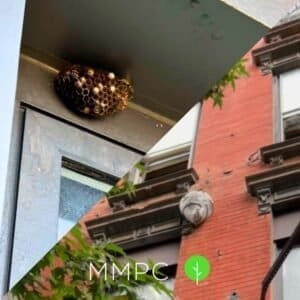
How to Identify Wasp & Hornet Nests
Identifying nests is key to managing wasp and hornet infestations, as it helps determine the species involved and the best approach for removal.
- Paper wasp nests: Small, umbrella-shaped nests with open combs. No outer covering, so individual cells are visible.
- Hornet nests: Large, football or teardrop-shaped nests with a protective gray papery envelope. Typically larger than paper wasp nests.
- Yellowjacket nests: Built underground in abandoned rodent burrows or in cavities like wall voids and attics.
- Mud dauber nests: Made from mud, resembling tubes or vases, usually attached to structures.
Our Services
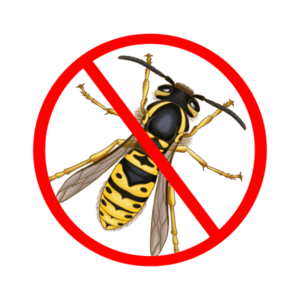

Need help getting rid of wasps? Talk to one of our pest experts today.


